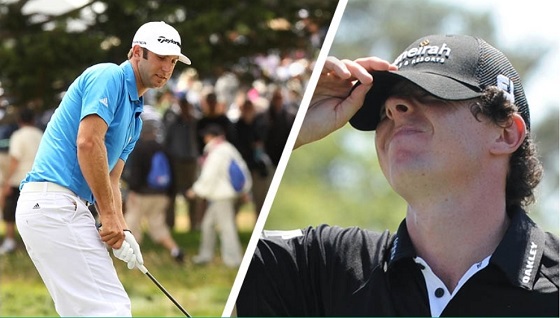Blog
Phil Makes an Appearance on Manningcast

As we wrote all the way back in Week 1, the Manningcast was and still is an electric factory, and as many have written since, it’s likely the future of watching sports. Get some former players in the same room + have them talk ball in a semi-unfiltered manner = profit. It’s that simple.
However, our criticism of the Peyton and Eli show 10 weeks ago is the same criticism now – there are too many guests and the show becomes too reliant on them. It’s not that the guests are bad (many have been quite entertaining), it’s that the guests take away from Peyton and Eli breaking down the game, which is what everybody comes to ESPN2 to watch for. Anytime a guest comes on, the Manningcast becomes an interview of the guest, which, quite frankly, nobody wants to watch in the middle of a game.
Enter Phil Mickelson, who was slotted in as the second-quarter guest ahead of Monday Night’s game between the San Francisco 49ers and L.A. Rams. While it was an exciting prospect, one couldn’t help but wonder if it would just be the Manning brothers asking Lefty about golf, which we’ve heard Mickelson talk about plenty over the years. After their first guest Al Michaels was bounced early the second quarter, Phil hopped on and completely flipped the thing on its head. He began asking Peyton and Eli football questions(what a concept!), and social media began to stand and applaud in unison.
Phil Mickelson asked great questions & was, BY FAR, the best guest on the Manningcast
on a football telecast, I'd much rather hear a guest come on & grill the Mannings about football strategy & the game on TV rather than them try & talk to the person for 15 minutes about golf— Warren Sharp (@SharpFootball) November 16, 2021
The key moment came about two minutes after Mickelson hopped on the broadcast, when he asked Peyton what Jimmy Garoppolo, or Peyton himself, would be thinking about as they approached the line of scrimmage. Peyton proceeded to go full pre-shot routine Phil, running through everything that would cross his gigantic dome pre-snap:
Phil Mickelson doing what I and so many other fans would probably do if we got to watch football with Peyton Manning. Pick his brain! pic.twitter.com/djOKtqfgQf— Ian Casselberry (@iancass) November 16, 2021
Unfortunately, that clip gets cut off, because Peyton when on for another 30 or 40 seconds. Usually the sign of a good question. Hell of a job, Phil.
Amazing question by Phil Mickelson and fascinating answer by Peyton about what he looks for when he approaches the line of scrimmage. I so love the Manning cast.— Matthew Berry (@MatthewBerryTMR) November 16, 2021
phil mickelson has been practicing these questions in the mirror for weeks— Jessica Smetana (@jessica_smetana) November 16, 2021
Phil Mickelson is like 100x better at prepping interview questions than me— Rodger Sherman (@rodger) November 16, 2021
Of course, there was plenty of joking around too, like when Eli asked if this “Manningcast Curse” is real. For those scratching their heads, all six active NFL players that appeared on the Manningcast so far this year have lost their very next game. Mickelson, naturally, had the perfect answer:
“That’s why I’m not playing next week.”@PhilMickelson is making sure the Manning curse doesn’t continue. ?
pic.twitter.com/TAePhBG2br— Golf Digest (@GolfDigest) November 16, 2021
Lefty also went full Tony Romo while Eli was off messing around with his golf swing on his basement simulator:
Phil Mickelson calling out the plays like Tony Romo, while Eli Manning works on the golf game. ?⛳️? pic.twitter.com/Rx60SDONqe— Awful Announcing (@awfulannouncing) November 16, 2021
Speaking of Eli’s golf swing, Phil obviously broke it down Konica Minolta biz hub style, referring to it as a “cute” little swing. Ouch:
Phil Mickelson has some pointers for Eli's "cute" golf swing ?
(via @ESPNNFL) pic.twitter.com/MV1It5VRJC— Sports Illustrated (@SInow) November 16, 2021
Great stuff from Phil, who, of course, had the Wanamaker in clear view, as expected. Did you guys know he won the PGA Championship?
Wanamaker in clear view as is tradition pic.twitter.com/5NOLnlICMH— Christopher Powers (@CPowers14) November 16, 2021
This article originally appeared on Golf Digest.
Blog
The Art of Golf Course Photography
Capturing a golf course’s essence involves conveying its beauty and tranquility through masterful photography techniques.

Capturing the Beauty of the Game
Ahoy, shutterbug golfers! This week, we’re diving into the enchanting world of golf course photography – because what better way to preserve the magic of the game than through the lens of a camera?
Check out the work by Peter Gibb he takes to the sky and photographs some iconic golf holes and then paints them on these beautiful canvases. Perhaps his style will inspire you as you capture your own images.

So grab your cameras, polish your lenses, and let’s explore the art of capturing the beauty of the game:
1. Seek out Stunning Vistas: Every golf course has its own unique beauty waiting to be discovered. Whether it’s a breathtaking ocean view, a majestic mountain backdrop, or a lush green fairway stretching into the horizon, seek out stunning vistas that showcase the natural splendor of the course.
2. Embrace Golden Hour: The golden hour – that magical time just after sunrise or before sunset – is a photographer’s best friend. The soft, warm light bathes the landscape in a golden glow, casting long shadows and creating dramatic contrasts. Embrace the golden hour to capture your golf course in all its radiant glory.
3. Focus on Details: While sweeping landscapes are certainly breathtaking, don’t overlook the smaller details that make each golf course unique. Whether it’s the intricate design of a bunker, the delicate petals of a flower, or the serene reflection of a pond, focus on capturing the finer details that add depth and character to the scene.
4. Experiment with Perspectives: Don’t be afraid to get creative with your compositions and perspectives. Experiment with different angles, vantage points, and framing techniques to add visual interest and depth to your photos. Whether you’re shooting from ground level, aerial drones, or even underwater, the possibilities are endless.
5. Tell a Story: Finally, use your golf course photos to tell a story – not just of the game, but of the experience and emotions it evokes. Whether it’s the joy of sinking a putt, the frustration of hitting into a hazard, or the camaraderie of playing with friends, let your photos capture the essence of the golfing experience in all its glory.

So there you have it, fellow photographers – the art of golf course photography in all its majestic splendor. Whether you’re seeking out stunning vistas, embracing golden hour light, focusing on details, experimenting with perspectives, or telling a captivating story, let your camera be your guide as you capture the beauty of the game for all to see. And if you are just interested in a wonderful piece of art reach out to Peter Gibb.
Until next time, may your shots be as sharp as your focus, your compositions be as flawless as your swings, and your photos be a window into the soul of golf. Snap on, my fellow shutterbugs!

Majestic events for some of golf’s elite
Hello, golf enthusiasts,
As we extend our series “Tales from the Greens: Chronicles of Golf Through the Ages,” today we shift our focus from players and equipment to the grand stages themselves—the tournaments that have defined competitive golf. These events are not just competitions; they are cultural phenomena that have shaped the sport and its global following. Let’s explore some of the most iconic golf tournaments and their profound impact on the sport.
The Masters: A Tradition Unlike Any Other
Held annually at Augusta National Golf Club, The Masters is synonymous with tradition and prestige. Founded by Bobby Jones and Clifford Roberts in 1934, this tournament is known for its green jacket, a coveted prize that symbolizes excellence and membership in golf’s most exclusive club. The Masters has been a stage for some of golf’s greatest moments, from Jack Nicklaus’ historic win in 1986 at the age of 46 to Tiger Woods’ dramatic comeback in 2019.
The Open Championship: Golf’s Oldest Major
Commonly referred to as The British Open, The Open Championship is the oldest of golf’s four major tournaments, first played in 1860. It is conducted annually on the links courses around Scotland and England, presenting a unique challenge with its unpredictable weather and rugged landscapes. The Claret Jug, awarded to the champion, is one of the most recognized trophies in all of sports.
The U.S. Open: Ultimate Test of Golf
The U.S. Open is renowned for its rigorous setup, which aims to test the limits of players’ skills and mental toughness. Conducted by the United States Golf Association (USGA), this tournament is played at various locations across the United States and is known for its narrow fairways, thick rough, and fast greens. Winning the U.S. Open is a testament to a golfer’s precision and perseverance.
The PGA Championship: A Showcase of Talent
The PGA Championship, conducted by the Professional Golfers’ Association of America, is where golf’s best professionals vie for the Wanamaker Trophy. This tournament is distinct for often being held at parkland courses across the U.S., featuring lush fairways and challenging greens. It’s a test of both skill and strategic play, often bringing out the best performances from the world’s top golfers.
These tournaments are more than just annual sporting events; they are a celebration of golf’s rich history and a showcase of its evolving future. Each tournament brings its unique flavor and set of challenges, contributing significantly to the legacy and popularity of the sport worldwide.
Join me next time as we explore golf’s role in fostering international camaraderie and sportsmanship.
Thank you for following along.
Warm regards,
Robert Greenfield
Blog
The Joy of Golfing with Friends

Building Bonds on the Fairway
Ahoy, golfing companions! This week, we’re celebrating the unparalleled joy of teeing off with friends – because as any golfer knows, there’s nothing quite like sharing the fairway with your favorite playing partners. So gather your crew, dust off your clubs, and let’s explore the magic of golfing with friends:
1. Shared Laughter, Shared Memories: Golfing with friends isn’t just about hitting the ball – it’s about sharing laughs, swapping stories, and creating memories that last a lifetime. Whether you’re reminiscing about past rounds, joking about missed putts, or simply enjoying each other’s company, the camaraderie of the game is what makes it truly special.
2. Support and Encouragement: One of the greatest benefits of golfing with friends is the support and encouragement they provide. From cheering you on after a great shot to offering words of wisdom when you’re struggling, your playing partners are there to lift you up and help you stay positive, no matter what challenges the course throws your way.
3. Friendly Competition: While golf is ultimately a game against the course, there’s no denying the thrill of a little friendly competition among friends. Whether you’re competing for bragging rights, playing for a friendly wager, or simply trying to outdo each other on the scorecard, the spirit of competition adds an extra layer of excitement to every round.
4. Strengthening Bonds: Golfing with friends isn’t just about the game – it’s about strengthening bonds and deepening friendships. The shared experiences, inside jokes, and moments of triumph and defeat on the course all serve to bring you closer together, forging bonds that are as strong as steel.
5. Lifelong Companionship: Finally, golfing with friends is about more than just the present moment – it’s about building lifelong companionship that extends far beyond the fairway. Whether you’re celebrating victories, commiserating over defeats, or simply enjoying each other’s company, the friendships forged on the golf course are ones that will endure for years to come.
So there you have it, fellow golfing comrades – the joy of golfing with friends in all its glorious splendor. Whether you’re sharing laughs, supporting each other through the ups and downs, or strengthening bonds that last a lifetime, there’s nothing quite like hitting the links with your favorite playing partners by your side. Until next time, may your rounds be filled with friendship, laughter, and unforgettable memories. Friends on, my fellow golfers!
-

 Product Review5 years ago
Product Review5 years agoThe Perfect Practice Putting Mat Review by Jason Tenzer
-

 Blog3 years ago
Blog3 years agoLoophole Rule Offers PGA Tour Pros a Mulligan
-

 Blog3 years ago
Blog3 years ago2021 Buyer’s Guide: The Top 10 Value Golf Balls For Distance & Feel
-

 Blog3 years ago
Blog3 years agoGolf Marriage Counselor
-

 Blog5 years ago
Blog5 years ago9 Biggest Chokes Of The Past Decade
-

 Product Review5 years ago
Product Review5 years agoTHE ADJUSTABLE IRONS: WALKING STICKS GOLF CLUBS
-

 Blog3 years ago
Blog3 years agoWhat Your Golf Clubs Say About You
-

 Equipment5 years ago
Equipment5 years agoOHK Sports Interview by Jason Tenzer





















